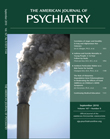Familial Transmission and Heritability of Childhood Disruptive Disorders
Abstract
Objective:
There is substantial evidence of a link between parental substance use disorders and antisocial behavior and childhood disruptive disorders in offspring, but it is unclear whether this transmission is specific to particular disorders or if a general liability accounts for familial resemblance. The authors examined whether the association between parental externalizing disorders and childhood disruptive disorders in preadolescent offspring is a result of the transmission of general or disorder-specific liabilities and estimated the genetic and environmental contributions to variation in these general and specific liability indicators.
Method:
Participants were 1,069 families consisting of 11-year-old twins and their biological mother and father. Structural equation modeling was used to simultaneously estimate the general and specific transmission effects of four parental externalizing disorders (conduct disorder, adult antisocial behavior, alcohol dependence, and drug dependence) on childhood disruptive disorders (attention deficit hyperactivity disorder, conduct disorder, and oppositional defiant disorder).
Results:
Parent-child resemblance was accounted for by the transmission of a general liability to externalizing disorders, and this general liability was highly heritable. Specific effects were also detected, but for sibling rather than parental transmission. Specific genetic and nonshared environmental effects were detected for each childhood disruptive disorder, but only conduct disorder exhibited a significant shared environmental effect.
Conclusions:
A highly heritable general liability accounts for the parent-child transmission of externalizing psychopathology from parents to their preadolescent offspring. This general liability should be a focus of research for both etiology and intervention.



